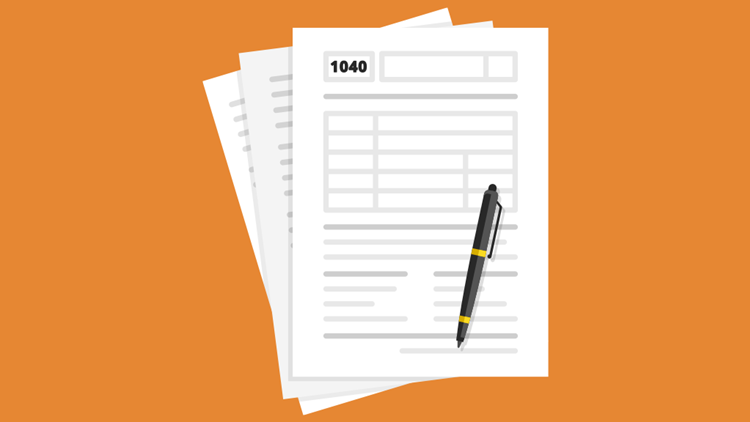
by | Nov 17, 2021 | Tax Tips and News
The Internal Revenue Service is doing a little extra to help those taxpayers who have suffered from the wildfires in California. The agency is pushing back the deadlines for filing and paying various individual tax returns to January 3.
The deadlines were originally extended by an August relief package and were scheduled to end November 15. The Federal Emergency Management Agency (FEMA) ended the incident period for the disaster on October 25, which mean the IRS relief period would close on December 25.
The IRS has to provide at least an additional 60 days of disaster relief by law, after FEMA’s incident period closes.
This extension of time to file and pay applies to taxpayers in any part of California that is within the FEMA declaration for either public or individual assistance. Currently, it covers those in Lassen, Nevada, Placer, Plumas, Tehama and Trinity counties, but other locations could be added later. If new locations are added, they’ll automatically be included in the IRS relief package.
To see the most up-to-date list of eligible counties, visit the disaster relief webpage on IRS.gov.
What are the terms of the relief?
The IRS relief for the wildfires generally follows the pattern the agency has taken with other disasters. In this case, the relief postpones filing and payment deadlines that started on July 14 of this year and delays those deadlines until Jan. 3, 2022. Taxpayers who had extensions to file a 2020 return that ran out on October 21 have until the January 3 date to file.
Payment, however, is not extended, since payment connected to those extended returns was originally due in May – before the disaster period began.
What else is covered by the relief?
Businesses also have more time under the IRS measure. Quarterly estimated income tax payments due in September are now delayed until January 3, as are quarterly payroll and excise tax returns that were normally due on August 2 and November 1.
Extended due dates are also granted to calendar-year partnerships and S corporations with 2020 extensions that ran out in September, calendar-year corporations with 2020 extensions ending October 15, and calendar-year tax-exempt groups with 2020 extensions that ran out November 15.
See the IRS disaster relief page for more details on all the aspects of the relief package, including returns, payments and what actions qualify for additional time.
No action needed to qualify
Terms of the IRS relief measures are granted automatically; no action is needed on the part of taxpayers.
The IRS uses the address it has on record to check that the taxpayer lives within the bounds of the latest FEMA disaster area.
If qualified taxpayers within the disaster area happen to receive a penalty notice with a due date within the postponement period – either for filing late or paying late – they should call the IRS to see about having the penalty abated. The phone number will appear on the notice.
Taxpayers, whether individuals or businesses, have a choice when it comes to reporting losses from the wildfires. Uninsured or unreimbursed losses can be claimed on the return for the year the loss occurred – in this case, 2021, normally filed next year – or on the return for the prior year, 2020.
In either instance, taxpayers should write the FEMA declaration number, DR-4610, on the return. For more on claiming disaster-related losses, check out Publication 547.
The IRS says its tax relief measures are part of the government’s coordinated response to the wildfires and is based on FEMA’s damage assessments. To learn more about the federal disaster recovery measures, visit DisasterAssistance.gov.
Source: IR-2021-224
– Story provided by TaxingSubjects.com

by | Nov 16, 2021 | Tax Tips and News
As the economy warms up in recovery mode, inflation starts to raise its ugly head. Everything—from baby food to new cars—costs more.
To keep up, the Internal Revenue Service has to update its tax processes and forms to adjust for inflation. So, the IRS has released the newest inflation adjustments for the 2022 tax year. They’ll generally apply to returns filed in 2023.
The full list is laid out in Revenue Procedure 2021-45.
What are the major changes?
The standard deduction generally leads the list of tax items of interest to taxpayers. Because of the adjustment for inflation, married couples filing jointly will see their standard deduction rise $800 to $25,900 for tax year 2022.
Singles and married taxpayers filing separately will see their standard deduction go up $400 to $12,950.
Heads of household also get a higher standard deduction; theirs rises by $600 to $19,400.
Not everything increases, though. The personal exemption stays at zero for tax year 2022, just like the prior year. The personal exemption was eliminated by the Tax Cuts and Jobs Act, signed into law in late 2017.
What are the marginal rates?
There’s no change in the top tax rate for tax year 2022; that remains at 37% for single taxpayers with income greater than $539,900 or for married taxpayers filing jointly with incomes above $647,850.
Other rates include:
- 35%, for incomes over $215,950 ($431,900 for married couples filing jointly);
- 32% for incomes over $170,050 ($340,100 for married couples filing jointly);
- 24% for incomes over $89,075 ($178,150 for married couples filing jointly);
- 22% for incomes over $41,775 ($83,550 for married couples filing jointly);
- 12% for incomes over $10,275 ($20,550 for married couples filing jointly).
- The lowest rate is 10% for incomes of single individuals with incomes of $10,275 or less ($20,550 for married couples filing jointly).
There’s no limit on itemized deductions in 2022, like the previous four tax years. The limitation was wiped out by the Tax Cuts and Jobs Act.
The Alternative Minimum Tax exemption for 2022 got a boost; the exemption amount goes up to $75,900 from 2021’s $73,600. Phase-out ranges were also increased.
Other various rate increases include:
Earned Income Tax Credit – The maximum EITC amount is marginally higher, rising from $6,728 to $6,935 for qualifying taxpayers with three or more children in tax year 2022. Revenue Procedure 2021-45 has details on other maximum levels, income thresholds and phase-outs.
Transportation Fringe Benefit – In 2022, the monthly limit for the qualified transportation fringe benefit and the limitation for qualified parking goes up to $280.
Foreign Income Exclusion – The exclusion for foreign earned income increases to $112,000 for tax year 2022. The 2021 exclusion was $108,700.
Gifts – For 2022, the exclusion for gifts is raised to an annual maximum of $16,000, an increase of $1,000 from the prior tax year.
Adoptions – The maximum credit for adoptions in tax year 2022 is increased to $14,890, up from $14,440 in 2021.
For more information on these and other rates, maximums and health account limits, see Revenue Procedure 2021-45.
Source: IR-2021-219
– Story provided by TaxingSubjects.com

by | Nov 12, 2021 | Tax Tips and News
The Internal Revenue Service is pushing out more information for taxpayers interested in the Child Tax Credit and its advance payments.
The IRS has updated its online list of frequently asked questions, or FAQs, for the 2021 Child Tax Credit and the Advance Child Tax Credit Payments.
The new verbiage describes how taxpayers can provide an estimate of their 2021 income to the IRS using the Child Tax Credit Update Portal (CTC UP).
The FAQs, the IRS says, are being updated to give more information to taxpayers and tax professionals alike as quickly as possible. The information for tax pros includes helpful advice on how practitioners can rely on the data within the Internal Revenue Bulletin—beyond that provided only in the FAQs.
More on the Advance Child Tax Credit
Beyond the updated FAQs, the IRS has also come up with a special web page on the Advance Child Tax Credit Payments in 2021. It aims to deliver up-to-date information about the credit and its advance payments. Visit the new web page at IRS.gov/childtaxcredit2021.
In order to help non-filers, low-income families and other underserved groups sign up for the credit, the IRS urges its partner organizations and community groups to share their information and take advantage of the agency’s online tools and toolkits.
Individuals can check whether they are eligible for the credit by visiting the Advance Child Tax Credit Eligibility Assistant.
The tool has its own set of frequently asked questions as well as direct links to the portal, links to the Non-filer Sign-up Tool and to the Child Tax Credit Eligibility Assistant, and other helpful resources.
Sources: IR-2021-218; General Overview of Taxpayer Reliance on Guidance Published in the Internal Revenue Bulletin and FAQs
– Story provided by TaxingSubjects.com

by | Nov 10, 2021 | Tax Tips and News
Taxpayers contributing to a 401(k) plan for their retirement have gotten some good news from the Internal Revenue Service: they can now put more money into their plan for 2022.
New instructions from the IRS raise the 2022 annual contribution limit on 401(k) plans from $19,500 to $20,500.
In addition, the IRS also issued technical guidance in Notice 2021-61 on all of the cost-of-living adjustments that affect limitations for pension plans and other retirement-related items for the 2022 tax year.
What are the 2022 changes?
The increase in the 2022 contribution limit applies not only to 401(k) plans, but to 403(b) plans, most 457 plans, and the federal government’s Thrift Savings Plan.
The income ranges used to determine eligibility have also been expanded for IRAs, contributing to Roth IRAs, and claiming the Saver’s Credit.
A taxpayer can deduct contributions to a traditional IRA as long as certain conditions are met.
If either the taxpayer or the spouse was covered by a retirement plan at work during the year, the deduction may be reduced – or phased out – until it’s eliminated. Filing status and income may influence this process.
Note that the phase-out of the deduction doesn’t apply if neither the taxpayer nor the spouse is covered by a retirement plan at work.
Here are the new phase-out ranges from the IRS for 2022:
- For single taxpayers covered by a workplace retirement plan, the phase-out range is increased to $68,000 to $78,000, up from $66,000 to $76,000.
- For married couples filing jointly, if the spouse making the IRA contribution is covered by a workplace retirement plan, the phase-out range is increased to $109,000 to $129,000, up from $105,000 to $125,000.
- For an IRA contributor who is not covered by a workplace retirement plan and is married to someone who is covered, the phase-out range is increased to $204,000 to $214,000, up from $198,000 to $208,000.
- For a married individual filing a separate return who is covered by a workplace retirement plan, the phase-out range is not subject to an annual cost-of-living adjustment and remains $0 to $10,000.
Taxpayers contributing to a Roth IRA see an increased income phase-out range of $129,000 to $144,000 for singles and heads of household; Married couples filing jointly phase out at $204,000 to $214,000.
A married taxpayer who files a separate return and contributes to a Roth IRA has the same phase-out as before: $0 to $10,000.
Allowable income for the Saver’s Credit also increased. Also known as the Retirement Savings Contribution Credit, the Saver’s Credit income limit increased for low- and moderate-income taxpayers is now $68,000 for married-filing-jointly couples; $51,000 for heads of household; and $34,000 for singles and married taxpayers filing separately.
Taxpayers with a SIMPLE retirement account can also contribute more to their retirement, with the yearly limit for them now at $14,000.
What doesn’t change?
The new instructions from the IRS don’t change everything, however. Annual contributions to an IRA, for example, remain limited to $6,000. The catch-up contribution limit for IRAs isn’t subject to a cost-of-living adjustment and remains at $1,000.
Employees age 50 and over who take part in either a 401(k), 403(b), most 457 plans or the federal Thrift Savings Plan keep their same catch-up contribution limit of $6,500. This means those participants can contribute up to a total of $27,000 in 2022.
For those taxpayers age 50 and older with SIMPLE plans, the catch-up contribution limit remains at $3,000.
For additional details on retirement plan cost-of-living adjustments for 2022, see Notice 2021-61 on IRS.gov.
Source: IR-2021-216
– Story provided by TaxingSubjects.com

by | Nov 6, 2021 | Tax Tips and News
A new provision in the tax code lets more taxpayers deduct up to $600 in donations to qualified charities—even if they don’t itemize.
Itemizing is ordinarily the key that unlocks the charitable donation deduction; taxpayers choosing the standard deduction usually just don’t have that option.
A new, albeit temporary, change in the tax law now lets taxpayers claim a limited deduction on their 2021 federal income taxes for cash contributions to qualified charitable organizations.
First enacted in 2020, the special deduction was extended in December 2020 to run through the end of 2021.
Individual taxpayers can claim up to $300 for such donations; married taxpayers filing jointly can claim double that amount.
The provision covers donations made by check, credit card or debit card and also includes amounts an individual may have in unreimbursed out-of-pocket expenses incurred through volunteering with a qualified charitable organization. Qualifying donations, however, don’t include the value of securities, household items or other property, or volunteer services.
This new deduction is not open to contributions to just any organization; only recognized charitable organizations qualify. Use the IRS Exempt Organization Search Tool to check the status of a charity.
Generally, cash contributions to most charities will qualify—but not always. Donating either to what’s called “supporting organizations” or to establish or maintain a donor-advised fund aren’t covered by the temporary deduction.
A donor-advised fund is generally a fund or an account that’s maintained by a charity that allows donors to tell the fund how to invest or distribute amounts contributed by the donor.
Supporting organizations are charities that support other tax-exempt organizations, which are usually other public charities.
There are other limitations in the deduction: qualified contributions can’t be carried forward from previous years and donations to most private foundations and charitable remainder trusts aren’t qualified.
Taxpayers claiming this deduction need to keep in mind that special record-keeping rules apply. This includes getting a letter from the charity acknowledging the donation before filing a return and keeping a cancelled check or credit card receipt to prove donations of cash.
Details on the rules of proving charitable gives are available in Publication 526, Charitable Contributions, on the IRS website.
Source: IR-2021-214
– Story provided by TaxingSubjects.com






